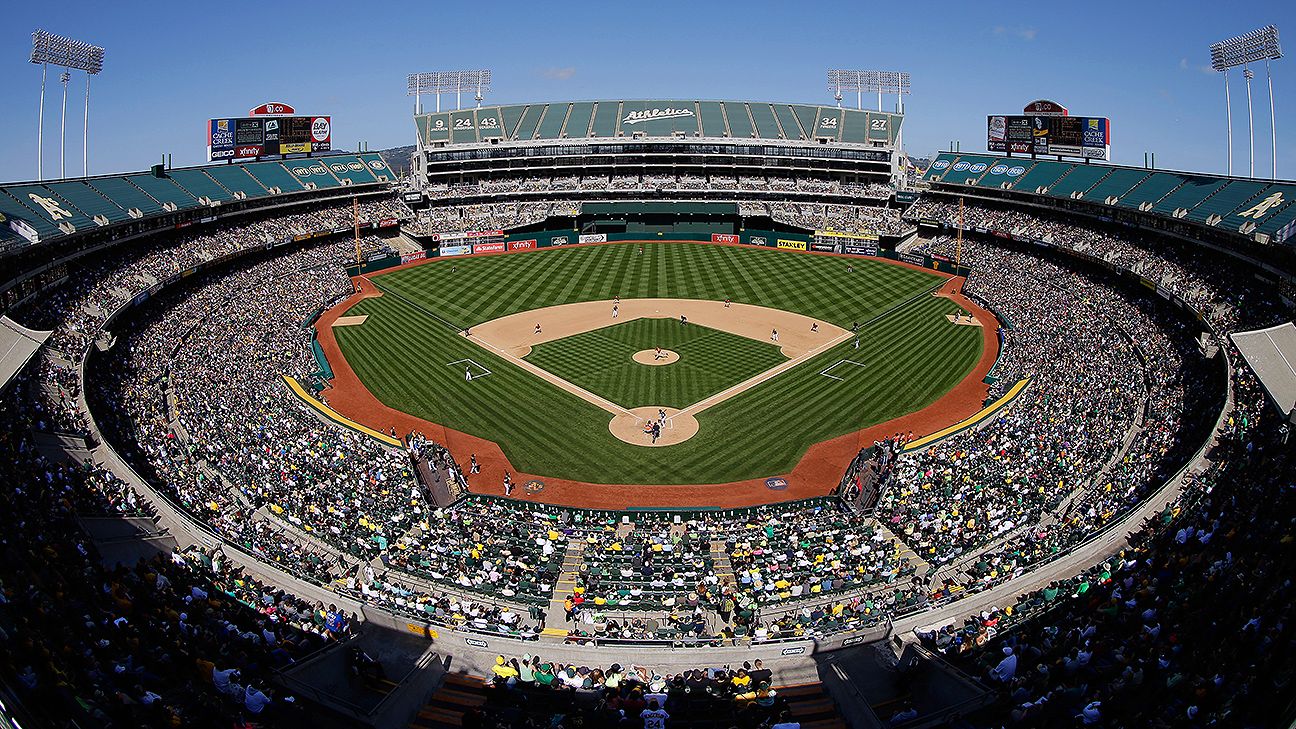Oakland Athletics president Dave Kaval stood somewhere near the south side of the Las Vegas Strip on Wednesday morning, with the Cosmopolitan and Planet Hollywood within eyesight. Kaval will be there alongside his architect over the next two days, he said, sitting in on a series of meetings and analyzing where a prospective new stadium could someday reside. Meanwhile, negotiations with the city of Oakland regarding a 35,000-seat waterfront ballpark at the Howard Terminal site are in what Kaval described as “the bottom of the ninth inning.”
Oakland City Council officials voted Tuesday in favor of a non-binding term sheet for the ballpark and its surrounding development, a project that will cost up to $12 billion. But Kaval pushed back because the city voted in favor of a term sheet that differed from the one the A’s proposed three months earlier and included amendments that the team was seeing for the first time. Major League Baseball commissioner Rob Manfred followed with a statement expressing disappointment in the outcome and promising to “immediately begin conversations with the A’s to chart a path forward for the Club.”
What, exactly, does that mean?
“I think we need to unpack what was passed and what it means,” Kaval said in a phone interview with ESPN. “The fact that the city did not vote on our proposal — I mean it’s unusual to have that positioning. We do appreciate some of the concessions that were made. I think the party had been negotiating in good faith to try to get to a mutually agreeable solution. Obviously we didn’t get there before the vote. And so we have to balance that progress with some of the stark realities of, ‘How do we move this project into an implementation phase?’ We can’t let the process be the product.”
The A’s made a public proposal in April stating they would privately finance the ballpark, which will cost an estimated $1 billion, while also providing $450 million in community benefits and arranging for an additional $11 billion in private investment to eventually build up the surrounding neighborhood with 3,000 residential units, up to 1.5 million square feet of commercial space, 270,000 square feet for retail, an indoor 3,500-seat performance center, 400 hotel rooms and up to 18 acres available for public parks.
The city countered with a plan that includes three key differences: a new financial structure that depends on only one infrastructure financing district, preventing the A’s from creating an additional one at Jack London Square; an increase in affordable housing demands to 35% of residential units; and an additional community benefits fund that isn’t solely committed to capital investments.
Oakland Mayor Libby Schaaf and other community leaders hosted a news conference near the Howard Terminal site on Wednesday morning in which they touted the city’s proposal and urged the A’s to continue negotiating. Schaaf said she’s noticing an “openness” from the A’s, adding that the city “provided the primary things that they asked for, that they have said they need to keep going on this process.”
“I respect that they’re trying to keep the heat on,” Schaaf said, “and what better place to go than Vegas for heat.”
Kaval, on the other hand, painted the Vegas trips as due diligence to cover for a project that might not materialize and provide a parallel path for a team playing in an outdated facility. Kaval said he wants more specifics about how the A’s would be reimbursed for a $352 million infrastructure payment and more specificity around when environmental clearances will be given and when a final binding vote can occur, ideally by the end of the current baseball season.
Oakland city officials see their counterproposal from Friday, and the amendments that were introduced on Tuesday, as the natural evolution of a negotiation.
A’s officials basically see it as a new agreement entirely.
“We need to know what was passed, how it relates to our original proposal,” Kaval said. “We need to understand the timeline to get the definitive vote. And we need to work really closely with the league, because they have a strong point of view on this. They wanna make sure the A’s have a home. We really are running out of time. We’re under a lot of pressure because our current facility is 10 years past its useful life. Let’s not forget that going sideways is really no longer an option.”
The A’s have spent the better part of the past two decades hoping to secure a new stadium in the Bay Area, a pursuit that took them through San Jose, Fremont and multiple sites in Oakland, most notably around Laney College. Renovations of the current Coliseum site, where the A’s have played since 1968, have been deemed nonviable largely because of the team’s stated desire for a downtown location.
Manfred said before last week’s All-Star Game that it would be a “mistake” to refer to the Las Vegas option as a bluff, calling it “a viable alternative for a major league club.” Other relocation options — including Portland, Oregon; Nashville, Tennessee; Charlotte, North Carolina; Vancouver, British Columbia; and Montreal — could materialize if the team’s deal with the city falls through.
That is not necessarily the case just yet.
“We’re focused on the two parallel paths — Oakland and southern Nevada,” Kaval said. “That’s by the direction of the league, and that will remain our focus until they give us additional direction.”
